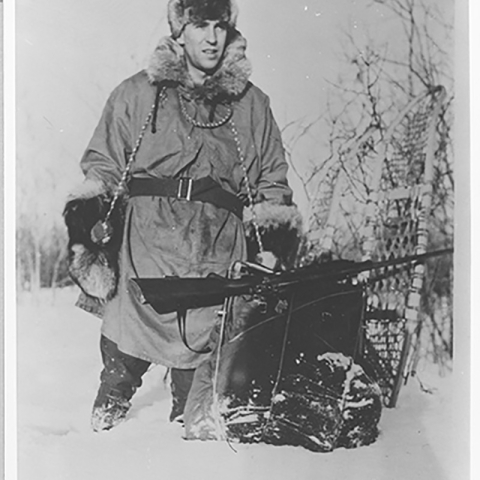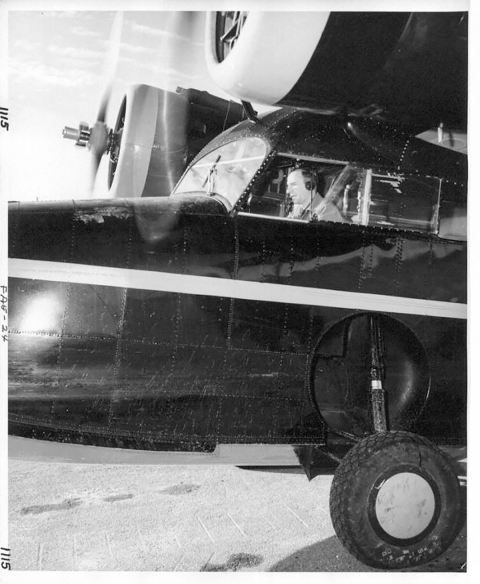
About Clarence J. Rhode (1913-1958)
Biography
Clarence Joseph Rhode was born in Sultan, Washington on April 15, 1913. Rhode never completed a college degree, but by the age of 15, he was dedicated to working with wildlife and became a deputy game warden in Washington state. He later moved to Alaska to work for the U.S. Forest Service, and he earned a commercial flying license, which he later used to serve as a commercial pilot during World War II. Notably, he flew the first Grumman Goose, an amphibious flying boat, for the Alaska Coastal Airlines during this time. After the war, the U.S. Fish and Wildlife Service (Service) named Rhode the Regional Director of Alaska. Rhode secured planes from military surplus for the Service, and his work as Regional Director led to the Service’s widespread use of airplanes in Alaska, which reduced the reliance on dog teams and decreased month-long waits for mail. Rhode later earned U.S. Department of the Interior and Congressional Record citations for his air rescue work.
Cause of Death
On August 21, 1958, Rhode was killed in the crash of a Grumman Goose in the Philip Smith Mountains of the Eastern Brooks Range. He was part of a round-trip mission from Porcupine Lake to Fairbanks to look over the Arctic wildlife area, count Dall sheep, and establish a gas cache. Rhode was accompanied by his eldest son, Jack, and Stanley S. Fredericksen, a game management agent for the Regional Office of Alaska. The flight was ultimately reported overdue, and a search was initiated. Their disappearance resulted in one of the largest air and ground searches in Alaska history, extending from the time of the incident to December 1958. However, it was not until August 23, 1979, that their story reached closure. Two hikers found the wreckage in a steep, craggy area almost 6,000 feet in elevation. An investigation into the wreckage indicated that the Grumman Goose likely hit a rock wall due to poor visibility in the high, narrow mountain pass, and this impact resulted in the onboard fuel exploding. The death of all three members of the flight was likely instantaneous. In 1961, the Service renamed the Kuskokwim Wildlife Range in southwestern Alaska the Clarence Rhode National Wildlife Range. This range later became part of the Yukon Delta National Wildlife Refuge in 1980. Additionally, the University of Alaska Fairbanks created the Clarence J. Rhode Memorial Scholarship Loan Fund in honor of Rhode’s work to support junior, senior, and graduate students pursuing degrees in wildlife management.
Sources
- Alaska Game Commision Juneau. “Caribou Management Studies.” Job Completion Reports,vol. 13, no. 3, 1 May 1959.
- Allen, David B. “Summary of accidental deaths of U.S. Fish and Wildlife Service employees in Alaska since 1958.” Received by Blake Sasse, 17 Feb. 1998.
- “Appendix Three Distinguished Service Award Recipients.” Orders & Medals Society of America
- “Clarence Joseph Rhode (1913-1958).” Family Search
- Davis, Joy. “Rhode Plane Wreckage in Alaska Found by Hikers After 21 Years.” U.S. Department of the Interior, 4 Sept. 1979.
- National Wildlife Refuge System. “A Look Back…Clarence Rhode.” Refuge Update, vol. 10, no. 6, Dec. 2013.
- “University of Alaska Fairbanks Campus Catalog, 1974-1975.” University of Alaska Fairbanks, 1974.
Key Fields
Born 1913, Died 1958, 45, Male, Regional Director, Regional Office of Alaska, Alaska, Plane, Crash, Eponym, Forest Service, Pilot, World War II
